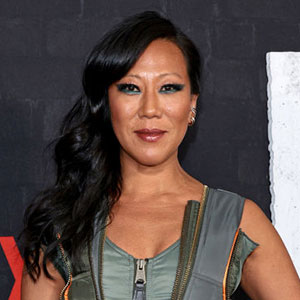
In mid-2018, Edahn Golan, a longtime diamond industry analyst, began publishing a quarterly lab-grown diamond price list charting wholesale transactions. His timing was spot-on—2018 was a watershed year for the nascent lab-grown category. Lightbox, De Beers’ lab-grown diamond subsidiary, made its debut at JCK Las Vegas that May, just as the industry’s retail gatekeepers indicated they were finally willing to give lab-created diamonds a chance.
“In 2017, if you asked a retailer, ‘Would you introduce lab-grown in your store?’ people said, ‘No, I’m a luxury retailer,’ ” Golan says. “And in 2018, they said, ‘I’ll go where my customers will take me.’ ”
Since then, questions about lab-grown prices—and how they are changing based on advances in technology and subsequent growth in production—have consumed both supporters and critics of the category. Golan spoke to JCK about what he’s learned by studying the data. The interview has been edited and condensed.
You noted that lab-grown prices have decreased since Valentine’s Day 2020. Is that due to the pandemic?
No, to the contrary. The decrease in prices was a result of the increase in the number of producers—we saw a lot more rough in the market—and an increase in the number of manufacturers bringing more polished. And all that happened during the pandemic, so you couldn’t move goods and there was a big inventory buildup. On top of it, the amount of goods that were generated outpaced growth and demand on the consumer level. That’s kind of normal. It’s a new category, there are growing pains, it’s going through the early stages. And the counterforce was COVID. All of a sudden people were buying jewelry online, especially earrings.
How have the first few months of 2021 been for lab-growns?
We see continued demand and a continued decrease in prices. What we’re seeing is the sort of “ills” we’re suffering from in the natural diamond industry. A lot of goods are supplied on memo, there’s stiff competition between wholesalers, and, in addition to that, we’re seeing the elements that are typical of a technologically driven item: For example, the cost of production is going down. We’re also seeing some odd behaviors such as attaching pricing to Rapaport pricing for naturals.
Why are lab-grown prices pegged to naturals?
Diamantaires are bringing their habits from the natural business. Lab-growns started at a discount of about minus 60, 65 [to Rapaport]. Today it’s minus 85 or even more. So what you’re seeing here are two oddities: One, the Rapaport Price List is attached to trends and cyclical behavior in the natural market, which is different than the cyclical trends we see in lab-grown. So it’s odd you’re attaching it to something that’s a disconnect to your own industry. And second, the discount is so large, it’s difficult to control.
How are retailers responding?
They’re doing everything to protect their margin. So if producers raise prices on a certain item, then they’ll raise prices to consumers. On the other hand, if wholesalers are reducing prices, then retailers are more flexible on pricing, too. So consumers are enjoying it.
And how are those retailers doing with the product?
There are three kinds of retailers: One kind that didn’t introduce lab-grown at all. Another kind that’s introducing lab-grown but doesn’t know how to differentiate it from naturals. And a third that understands it’s a separate category. Those that don’t really understand it’s a separate category are not doing well.
Imagine a potential customer walks into a store and they’re interested in a diamond jewelry item. If you don’t succeed in selling them a natural diamond and you say, “I have something, it’s a diamond, costs a lot less”—that’s a turnoff.
Those that do well might start by qualifying the customer: “Are you looking for natural or are you interested in lab-grown?” Don’t treat it as an afterthought. Train your sales staff so your people know about the product and can explain it. You can’t just say it’s the “ethical choice” because you’re killing the alternative. Those who know how to talk positively about their product—without bad-mouthing the other product—have specialized staff training and who know how to approach this are doing exceptionally well.
And what do you make of lab-grown’s positioning? Do you see it as a bridal product, a fashion product, or both?
Currently a lot of bridal jewelry is sold with lab-grown—but to put it in perspective, we’re talking about 3% of sales last year. Look at diamonds in general: Lab-grown share is about 3–3.5% and it’s very much an American product. Sixty percent of India’s exports of lab-grown go to the United States, and the rest go to manufacturing centers—Thailand, China, places where they make jewelry. In that regard, there are many bridal items being sold with lab-grown.
But look to the future and ask yourself, when I buy an engagement ring or bridal jewelry, what kind of item do I want in it? Something low-cost or something that represents something bigger? The aim of the diamond industry is that when it comes to bridal, it has to be natural. If you look at it on a monthly basis, you see that in February, May, November, and December the share of lab-grown decreases—those are times when people buy engagement rings or love-oriented jewelry. The aim of the natural diamond industry—De Beers is the most vocal of them all—is that when it comes to bridal, natural is the natural choice.
How do you see the lab-grown diamond fashion category developing?
For fashion, lab-grown has the option of growing in two directions. Either you want to buy something low-cost and the cost will be reduced because the cost of production will come down. The other option is you’re not really selling diamond jewelry, you’re selling branded jewelry.
If you’re able to etch in people’s minds that your brand is something to be associated with and that will include high-quality workmanship, unique designs, and a story that you can relate to, then you’re really buying the jewelry because of all those values and not because it has a certain component inside it. So if you’re able to brand your lab-grown diamond jewelry successfully, that’s where it will be an interesting proposition for bridal. Walk into De Beers Jewellers or Tiffany—their best-selling bridal items are solitaires, a simple ring and a diamond on top. And people are willing to pay a premium because it comes from this brand. And you can extend that into other items.
In the end, all lab-grown are going to look the same: They’ll all be D flawless, and there are only so many shapes you can polish them into. It’ll only be a question of value proposition.
If you were a diamantaire, which part of this business would you be in?
This is what I tell people who ask me for advice: If you’re dead set on diamonds, go to the very high end: 5, 10 carats and above, natural. That’s where the real margins are. Try to get them firsthand: Buy rough and polish it, and your polishing has to be superb. And you need to know who to sell it to and how to sell it. Those in this area are very successful at all times. During this year, during COVID, those that dealt with 5–10 carats and above, D flawless, triple X, and above raised prices because demand outpaced supply, and rarity is an important thing there.
And what advice do you have for people committed to lab-grown?
Once the cost of production is low enough and the quality is high enough—where you get to D flawlesses—you can make all sorts of designs. The whole ring is a lab-grown diamond. Why stop there? You can make Buddhas and crosses, the list goes on. Be creative, you have a raw material. It’s a canvas. Make something completely different so you stand out.
- Subscribe to the JCK News Daily
- Subscribe to the JCK Special Report
- Follow JCK on Instagram: @jckmagazine
- Follow JCK on X: @jckmagazine
- Follow JCK on Facebook: @jckmagazine






